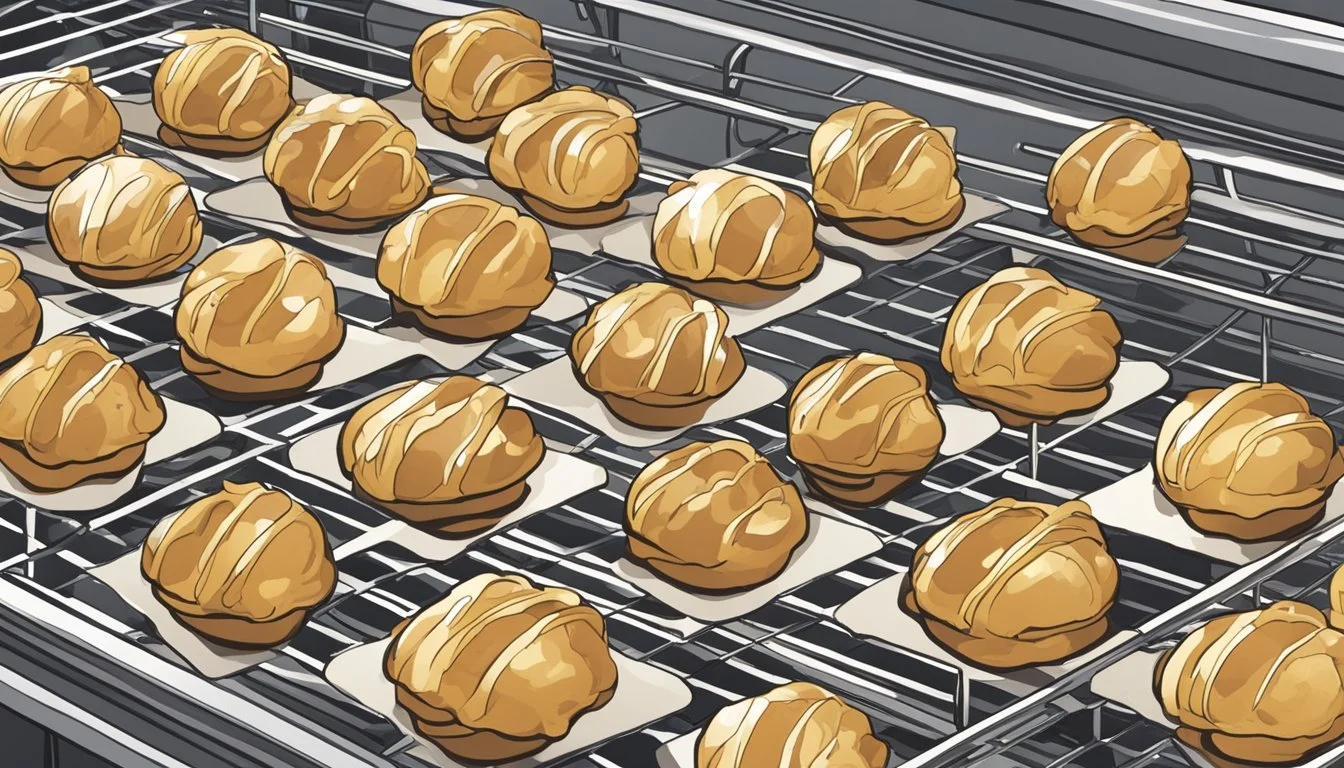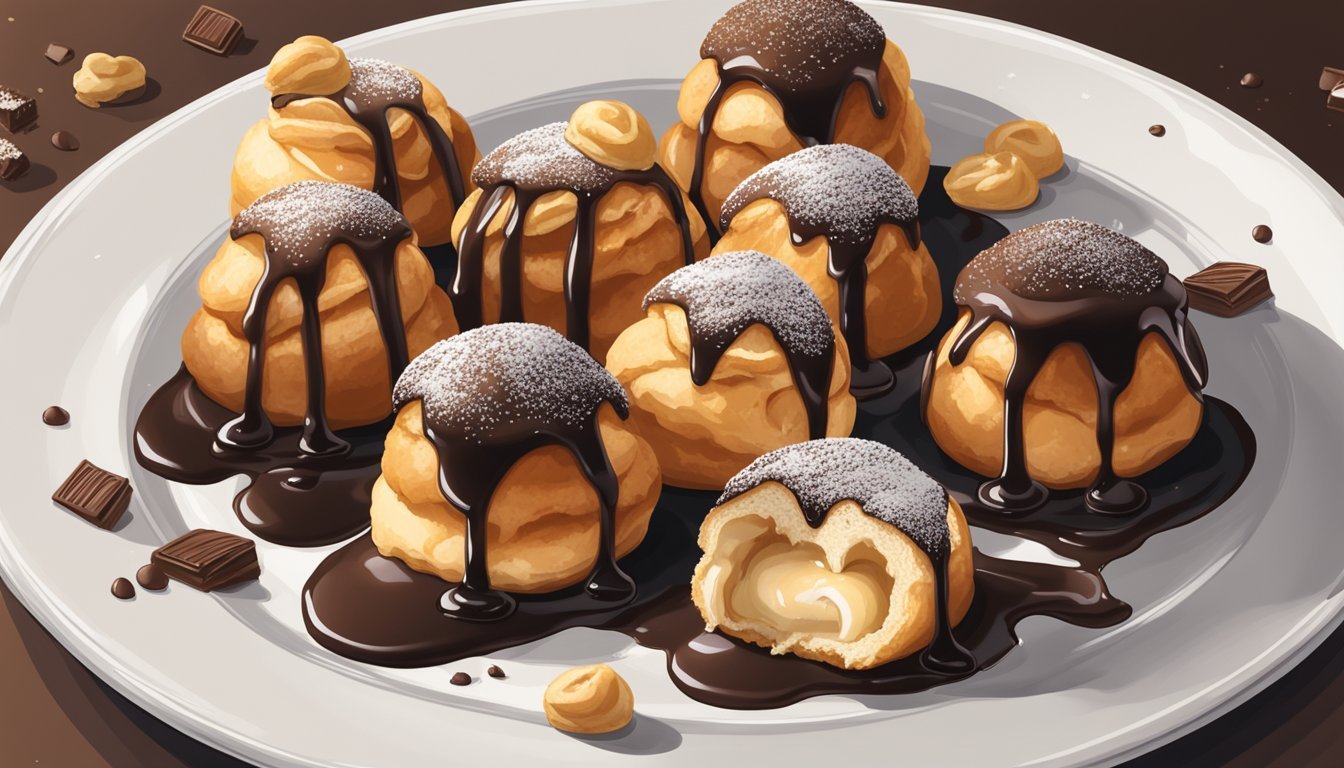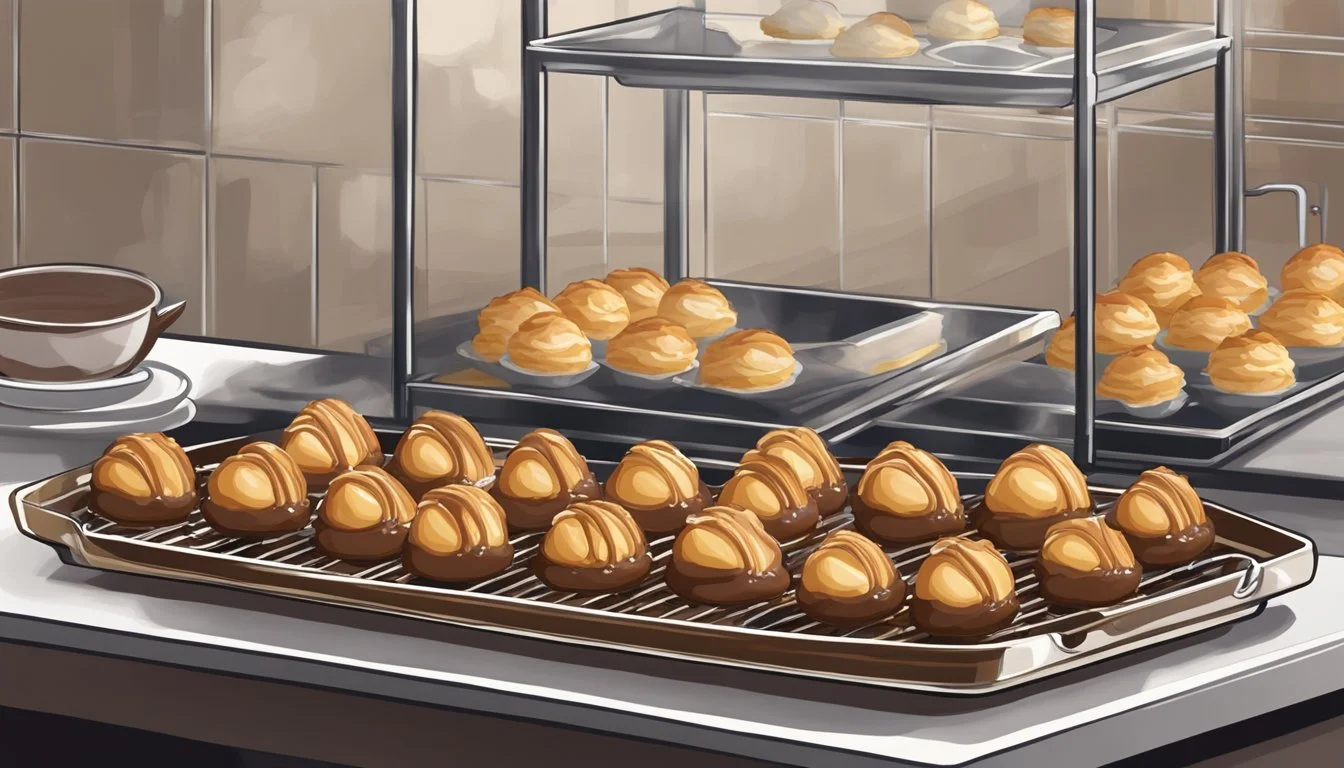How Long Do Freshly Prepared Profiteroles Last?
Shelf Life and Storage Tips
Profiteroles, the quintessentially French dessert, are delicate and airy, often filled with cream (how long does cream last?) or custard and drizzled with chocolate. While they offer a luxurious end to a dining experience, their shelf life is a common concern for those who prepare them. Freshly made and unfilled, profiteroles will maintain their texture and flavor for up to 24 hours at room temperature. However, once filled with cream or custard, their lifespan shortens, and they are best consumed within a few hours to maintain optimal taste and texture.
When stored in the refrigerator, filled profiteroles have a window of approximately 24 to 36 hours before they begin to suffer from sogginess due to moisture absorption. Freezing offers an extended preservation solution; unfilled profiteroles can be kept for around three months when stored properly in an airtight container. It is essential to label the storage container with the date to ensure quality and safety.
Understanding the appropriate storage techniques can be the difference between a perfect profiterole and one that is less than its best. To ensure freshness, unfilled profiteroles should be kept in an airtight container, and once ready to serve, they should be filled as close to service time as possible. This approach allows for profiteroles that are crisp on the outside, light on the inside, and delightful in every bite.
Understanding Profiteroles
Profiteroles, also known as cream puffs, are a French dessert that combines delicate choux pastry with a variety of fillings.
Definition and History
Profiteroles are a classic French dessert made from small balls of choux pastry filled with cream and often topped with chocolate. The history of profiteroles dates back to Renaissance times where they were adored by French royalty, eventually becoming popularized as a patisserie staple.
Ingredients and Recipe Essentials
The essential ingredients for choux pastry include water, flour, eggs, unsalted butter, salt, and sugar. To create the dough, these ingredients are cooked together before eggs are added. The mixture is then piped onto a baking tray, typically lined with parchment paper, and baked until golden and crispy.
Baking Techniques
Baking profiteroles requires precision to achieve the perfect texture. The oven is generally preheated to a high temperature. Small rounds of dough are piped onto the prepared tray and then placed in the oven to bake. The high heat turns water in the dough to steam, puffing up the pastry, which is then baked until it's crisply golden. This technique is crucial in creating the hollow center that is later filled with cream, and the pastry is often topped with chocolate for added flavor.
Profiterole Preservation
Proper storage of profiteroles is crucial for maintaining their crispiness and preventing them from becoming soggy. The following subsections provide specific instructions on how to preserve profiteroles under various conditions.
Storing at Room Temperature
Profiteroles should only remain at room temperature for a short period post-baking to avoid humidity affecting their crisp exterior. They are best consumed within a few hours after they are prepared, as prolonged exposure to room air can make them soggy.
Refrigerating Profiteroles
When refrigerated, profiteroles should be placed in an airtight container to shield them from moisture and other fridge odors. Filled profiteroles will last in the refrigerator for 24 to 36 hours before they start to deteriorate. For optimal freshness, profiteroles should be kept away from strong-smelling food items to prevent flavor absorption.
Freezing and Thawing
For longer storage, profiteroles can be frozen in a freezer-safe airtight container for up to three months. It is recommended to freeze them first on a tray so they do not stick together, then transfer to the container. When thawing, one must avoid using the microwave which can introduce uneven heat and cause sogginess. Instead, thaw them in the refrigerator or at room temperature to maintain their quality.
Serving and Consumption
To ensure the best quality and taste, freshly prepared profiteroles should be filled, served, and consumed promptly. The following subsections detail the key steps for filling and assembling your profiteroles, the optimal serving time to maximize freshness, and how to handle any leftovers for reuse or repurposing.
Filling and Assembling
Profiteroles offer a variety of filling options such as whipped cream, custard, and ice cream. It is essential to pipe the filling into the choux pastry just before serving to maintain quality. For whipped cream or custard-filled profiteroles, use a piping bag fitted with a large round tip to inject the filling. For those opting for ice cream, slice the pastry horizontally and scoop the ice cream onto the bottom half before replacing the top.
Optimal Serving Time
The optimal serving time for profiteroles is immediately after they are filled. This ensures the pastry retains its crisp exterior while the filling remains creamy and luscious. Whipped cream and custard provide a rich, indulgent experience, while ice cream-filled profiteroles should be served quickly to prevent the ice cream from melting. If using ganache or chocolate sauce, a warm drizzle just before serving adds a delectable layer of flavor.
Leftovers: Reusing and Repurposing
Although best when fresh, leftover profiteroles can be preserved for later consumption. Refrigerate them in an airtight container to maintain freshness for up to 24 hours, though the quality may decline slightly as the pastry softens. For longer storage, unfilled profiteroles can be frozen and later restuffed with the filling of choice, such as whipped cream, vanilla custard, or jam. Leftovers can also serve as a versatile base for creating new desserts or as an accompaniment to other sweets.
Safety and Health Considerations
When dealing with freshly prepared profiteroles, it is crucial to adhere to safety and health guidelines to prevent foodborne illnesses such as salmonella, which can be associated with eggs, and to ensure the quality and freshness of the dessert. The following subsections will guide readers on the best practices for handling and identifying spoilage.
Best Practices for Handling
Temperature Control: Always maintain an appropriate temperature. Profiteroles should be refrigerated at temperatures below 40°F (4°C) if not served immediately, and especially if they contain cream or custard fillings. To avoid the rapid growth of bacteria, do not leave profiteroles at room temperature for more than 2 hours.
Hygiene: Ensuring cleanliness is paramount in food preparation. Hand washing and using clean utensils minimalize the risk of cross-contamination. Surfaces where profiteroles are assembled should be thoroughly sanitized.
Identifying Spoilage
Appearance: Inspect for any visible signs of mold or discoloration. Fillings that appear curdled or have signs of separation should also be discarded.
Odor: A sour or off smell is a clear indicator that profiteroles have spoiled and should not be consumed.
Texture: Freshly prepared profiteroles should have a smooth creamy filling and a crisp choux pastry. A slimy or unusually soft texture can denote spoilage.
Profiteroles, particularly when filled with cream-based products, are susceptible to spoiling. Abiding by these guidelines is essential for ensuring both the safety and health of consumers.
Advanced Tips and Techniques
Mastering the art of profiteroles involves a deep understanding of each component, from crafting the choux pastry to selecting the perfect pairings and decorations. Below are advanced techniques to enhance your profiteroles to professional standards.
Achieving the Perfect Choux
The foundation of any profiterole is the choux pastry, which should be light, hollow, and dry. To achieve this:
Wooden Spoon: Use it to stir the dough vigorously for a glossy sheen that indicates a proper emulsion.
Rolling Boil: Ensure the liquid reaches a rolling boil before adding flour to prevent a doughy center.
Variations and Flavor Pairings
Profiteroles can be paired with a variety of fillings and flavors:
Classic Fillings: Chantilly cream or vanilla pastry cream are traditional choices.
Ganache: Chocolate ganache offers a rich contrast to the light choux pastry.
Bold Pairings:
Sweet with a touch of salt can add depth.
Match with seasonal fruit for freshness.
Decorating and Presentation
The final presentation can make or break the appeal of profiteroles:
Glossy Glaze: A glaze or icing should be glossy, enhancing the visual allure.
Powdered Sugar: A dusting of powdered sugar adds a delicate touch.
Chocolate Ganache: Use it not just as a filling, but also as a decorative drizzle for a decadent finish.
Remember, presentation is as much about the look as it is about flavor harmony.







